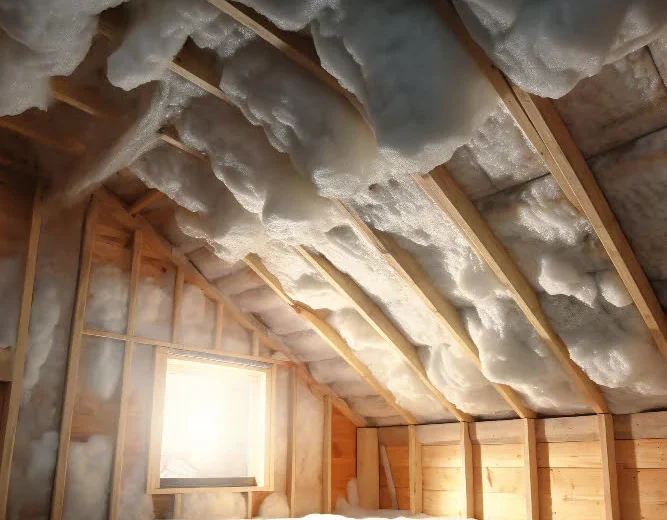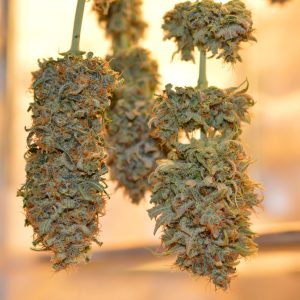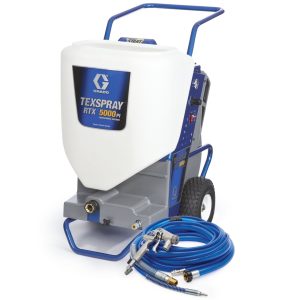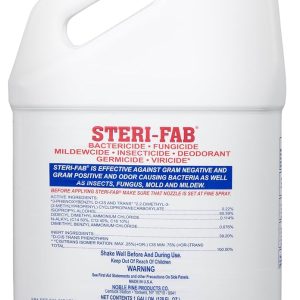
When it comes to maximizing your home’s energy efficiency, spray foam attic insulation stands out as one of the most effective solutions available to homeowners today. This revolutionary insulation method has transformed how we think about home comfort, energy savings, and long-term building performance. Unlike traditional insulation materials that simply fill spaces, spray foam creates an airtight seal that dramatically improves your home’s thermal envelope while addressing multiple building performance issues simultaneously.
The importance of proper attic insulation cannot be overstated, especially when considering that approximately 25% of heat loss in homes typically occurs through the roof. This significant heat loss translates directly into higher energy bills and reduced comfort levels throughout your home. By choosing spray foam for your attic insulation needs, you’re investing in a solution that not only addresses thermal performance but also provides superior air sealing, moisture control, and structural benefits that traditional insulation materials simply cannot match.
Understanding Spray Foam Attic Insulation Technology
Spray foam attic insulation represents a sophisticated approach to building envelope performance that goes far beyond traditional insulation methods. This technology involves the application of liquid polyurethane foam that expands and hardens to create a continuous, seamless barrier across your attic surfaces. The chemical reaction that occurs during application creates millions of tiny air bubbles that provide exceptional insulating properties while simultaneously forming an impermeable seal against air infiltration.
The science behind spray foam insulation lies in its unique cellular structure and adhesive properties. When the two-component mixture is applied, it expands to fill every crack, gap, and irregular surface in your attic space. This expansion capability allows the foam to conform to any shape or configuration, creating a perfect seal around electrical wiring, plumbing penetrations, and structural elements that would be impossible to achieve with traditional insulation materials.
There are two primary types of spray foam used in attic applications: open-cell and closed-cell foam. Open-cell spray foam has a lighter density and allows some air permeability, making it an excellent choice for interior applications where moisture management is important. Closed-cell spray foam, on the other hand, creates a completely impermeable barrier that provides both insulation and structural reinforcement, making it ideal for exterior applications and areas requiring maximum thermal performance.
Benefits of Spray Foam Attic Insulation
Superior Energy Efficiency and Cost Savings
The energy performance benefits of spray foam attic insulation are truly remarkable and represent one of the most compelling reasons to choose this technology. Compared to other insulations, spray foam often yields a 30% to 70% increase in energy efficiency. This dramatic improvement in energy performance translates directly into substantial monthly savings on your heating and cooling bills.
Research consistently demonstrates that attics are responsible for about 50% of the energy efficiency in a home, making proper insulation of this space critical for overall home performance. The EPA estimates that homeowners can save an average of 15% on heating and cooling costs (or an average of 11% on total energy costs) by air sealing their homes and adding insulation in attics. However, spray foam insulation typically exceeds these averages due to its superior air sealing capabilities.
Studies show that spray foam insulation can save homeowners around 29.5% on their power bills, with these savings accumulating month after month. The Canadian Urethane Foam Contractors Association reports that adding insulation to your home can save up to 20% of energy consumption, while also allowing for 35% of HVAC sizing can be reduced when using spray foam insulation.
Exceptional Air Sealing Properties
One of the most significant advantages of spray foam attic insulation is its ability to create an airtight seal throughout your attic space. Spray foam insulation creates an airtight seal in your attic, preventing unwanted air leaks. This comprehensive air sealing eliminates the drafts, hot spots, and cold spots that plague homes with traditional insulation materials.
Traditional insulation materials like fiberglass batts or blown-in cellulose rely on air spaces for their insulating properties, but these same air spaces can become pathways for air infiltration when not properly sealed. Spray foam eliminates this problem by expanding to fill every gap and creating a continuous thermal barrier that prevents air movement through the building envelope.
The air sealing properties of spray foam also help maintain consistent indoor temperatures and reduce the workload on your HVAC system. This means your HVAC system won’t have to work as hard to maintain the desired temperature in your home, resulting in lower energy bills and extended equipment life.
Moisture Control and Structural Benefits
Spray foam attic insulation provides excellent moisture management capabilities, particularly when using closed-cell formulations. The impermeable nature of closed-cell spray foam prevents moisture infiltration while still allowing the structure to breathe properly when designed correctly. This moisture control helps prevent mold growth, wood rot, and other moisture-related building problems that can compromise your home’s structural integrity.
The structural benefits of spray foam insulation extend beyond moisture control. The adhesive properties of spray foam create a strong bond with the surfaces it’s applied to, effectively adding structural reinforcement to your attic space. This can be particularly beneficial in areas prone to high winds or seismic activity, where the additional structural support can help improve overall building performance.
Cost Analysis of Spray Foam Attic Insulation
Initial Investment and Material Costs
Understanding the cost structure of spray foam attic insulation is essential for making an informed decision about your home improvement investment. The initial cost of spray foam insulation is typically higher than traditional insulation materials, but the long-term benefits often justify this upfront investment.
Using open-cell spray foam, the attic spray foam insulation cost is between $3,500 – $5,000, while closed-cell spray foam costs range from $4,500 to $7,000 for the same project size. For a more specific range, the average cost to spray foam an attic in an existing home typically ranges from $5,100 to $10,300.
The cost per square foot varies depending on the type of foam and project specifics. On average, spray foam insulation can cost anywhere from $1 to $3 per square foot for open-cell foam and $1.50 to $4 for closed-cell foam. More comprehensive estimates suggest that spray foam insulation costs between $1.50 and $4.50 per square foot to install.
Labor and Installation Costs
Professional installation is crucial for achieving optimal performance from your spray foam attic insulation system. Spray foam insulation contractors charge about $1.50 to $4.90 per square foot for labor. The complexity of your attic space, accessibility, and local labor rates all influence the final installation cost.
Excluding materials, having someone install spray foam in your attic can cost you around $300 to $800. However, this estimate can vary significantly based on project size and complexity. The investment in professional installation ensures proper application, optimal performance, and warranty coverage for your insulation system.
Long-term Return on Investment
While the initial cost of spray foam attic insulation may seem substantial, the long-term financial benefits make it an excellent investment. The combination of energy savings, reduced HVAC maintenance costs, and improved comfort levels typically results in a payback period of 3-7 years, depending on your local energy costs and climate conditions.
The durability of spray foam insulation also contributes to its long-term value. Unlike traditional insulation materials that may settle, shift, or degrade over time, properly installed spray foam maintains its performance characteristics for decades. This longevity means you won’t need to replace or supplement your insulation system, providing ongoing value for your investment.
Installation Process and Considerations
Professional Installation Requirements
The installation of spray foam attic insulation requires specialized equipment, training, and safety protocols that make professional installation the only viable option for most homeowners. The process involves mixing and applying chemicals under pressure, requiring proper ventilation, personal protective equipment, and precise temperature and humidity control for optimal results.
Professional installers have the expertise to properly prepare your attic space, which may include sealing electrical penetrations, installing proper ventilation systems, and ensuring adequate clearances around heat sources. They also understand the building codes and manufacturer specifications that govern spray foam applications in residential settings.
The installation process typically begins with a thorough inspection of your attic space to identify any issues that need to be addressed before foam application. This may include repairing air leaks, addressing moisture problems, or making electrical modifications to ensure safe and effective installation.
Preparation and Safety Considerations
Before installing spray foam attic insulation, several preparation steps are essential for achieving optimal results. The attic space must be properly ventilated during installation, and all electrical systems should be inspected to ensure they meet current codes and can safely operate with spray foam insulation.
Safety considerations include proper personal protective equipment for installers, adequate ventilation to prevent chemical exposure, and temporary relocation of occupants during the installation process. The chemical components of spray foam can be harmful if not handled properly, making professional installation the safest and most effective approach.
Temperature and humidity conditions must be carefully controlled during installation to ensure proper foam expansion and curing. Ideal conditions typically include temperatures between 60-80°F and relative humidity levels below 50%. These conditions ensure optimal foam performance and prevent issues like poor adhesion or improper curing.
Comparing Spray Foam to Traditional Insulation
Performance Differences
When comparing spray foam attic insulation to traditional materials like fiberglass batts or blown-in cellulose, the performance differences are significant and measurable. Traditional insulation materials rely primarily on trapped air for their insulating properties, while spray foam provides both thermal resistance and air sealing in a single application.
The R-value (thermal resistance) of spray foam varies by type and thickness, but the effective R-value is often higher than traditional materials due to the elimination of air infiltration. Open-cell spray foam typically provides an R-value of 3.5-4.0 per inch, while closed-cell foam provides R-6.0-6.5 per inch. However, the air sealing properties of spray foam mean that the actual thermal performance often exceeds what the R-value alone would suggest.
Traditional insulation materials can lose significant effectiveness when air infiltration occurs, which is common in attic applications where perfect installation is difficult to achieve. Spray foam eliminates this problem by creating a continuous seal that maintains its performance regardless of air movement patterns.
Durability and Longevity
Spray foam attic insulation offers superior durability compared to traditional insulation materials. While fiberglass batts may compress over time and blown-in materials may settle, spray foam maintains its structure and performance characteristics for decades. This stability ensures consistent energy performance throughout the life of your home.
The chemical composition of spray foam makes it resistant to moisture, pests, and degradation that can affect traditional insulation materials. This resistance to environmental factors contributes to the long-term value proposition of spray foam insulation systems.
Environmental Impact and Sustainability
Modern spray foam attic insulation products have evolved to include more environmentally friendly formulations that reduce their global warming potential while maintaining superior performance characteristics. Many manufacturers now offer low-GWP (Global Warming Potential) formulations that provide the same performance benefits with reduced environmental impact.
The energy savings achieved through spray foam insulation also contribute to environmental sustainability by reducing overall energy consumption and associated carbon emissions. Over the life of the insulation system, these energy savings typically offset the environmental impact of the materials themselves.
Maintenance and Long-term Performance
Minimal Maintenance Requirements
One of the significant advantages of spray foam attic insulation is its minimal maintenance requirements once properly installed. Unlike traditional insulation materials that may need periodic inspection and replacement, spray foam maintains its performance characteristics with little to no ongoing maintenance.
The structural integrity of spray foam means it won’t settle, shift, or develop gaps over time, eliminating the need for periodic re-installation or supplementation. This stability ensures consistent energy performance throughout the life of your home without the ongoing costs associated with traditional insulation maintenance.
Performance Monitoring
While spray foam attic insulation requires minimal maintenance, periodic performance monitoring can help ensure optimal energy efficiency. This monitoring typically involves annual energy usage analysis and occasional visual inspections to verify the integrity of the insulation system.
Professional energy audits can help identify any changes in your home’s energy performance and determine if any adjustments or improvements are needed. These audits can also help optimize other building systems to work effectively with your spray foam insulation.
Warranty and Protection
Most professional spray foam attic insulation installations come with comprehensive warranties that protect your investment. These warranties typically cover both material performance and installation quality, providing peace of mind and protection against unexpected issues.
Understanding the terms and conditions of your warranty is important for maintaining coverage and ensuring optimal performance of your insulation system. Regular maintenance of other building systems, such as HVAC equipment and ventilation systems, can help maintain warranty coverage and optimal performance.
Frequently Asked Questions About Spray Foam Attic Insulation
How long does spray foam attic insulation last?
Spray foam attic insulation is designed to last for the life of your home when properly installed and maintained. Most manufacturers provide warranties of 25-30 years, but the actual lifespan often extends well beyond this period due to the chemical stability and durability of the foam materials.
Is spray foam attic insulation worth the investment?
The investment in spray foam attic insulation typically pays for itself through energy savings within 3-7 years, depending on your local energy costs and climate conditions. The combination of energy savings, improved comfort, and long-term durability makes spray foam an excellent value proposition for most homeowners.
Can spray foam attic insulation be installed over existing insulation?
In most cases, spray foam attic insulation can be installed over existing insulation materials, though this depends on the condition and type of existing insulation. Professional installers can evaluate your specific situation and recommend the best approach for your home.
Does spray foam attic insulation require special ventilation?
Spray foam attic insulation applications may require modifications to your attic ventilation system, particularly when using closed-cell foam. Professional installers can design and install appropriate ventilation systems to ensure optimal performance and building code compliance.
What are the health and safety considerations with spray foam attic insulation?
Spray foam attic insulation is safe once fully cured, but proper installation procedures are essential for occupant safety. Professional installation ensures proper ventilation, appropriate curing time, and safe re-occupancy of your home.
How does spray foam attic insulation perform in extreme weather conditions?
Spray foam attic insulation performs exceptionally well in extreme weather conditions, maintaining its thermal and structural properties across a wide temperature range. The air sealing properties of spray foam are particularly beneficial in areas with severe weather, helping to maintain consistent indoor conditions.
Ready to transform your home’s energy efficiency with spray foam attic insulation? Contact professional installers in your area to schedule a consultation and discover how this advanced insulation technology can reduce your energy costs while improving your home’s comfort and performance. For DIY enthusiasts interested in smaller projects, consider exploring closed cell spray foam kits for specific applications around your home.
Source: Spray Foam Attic Insulation Benefits and Installation





